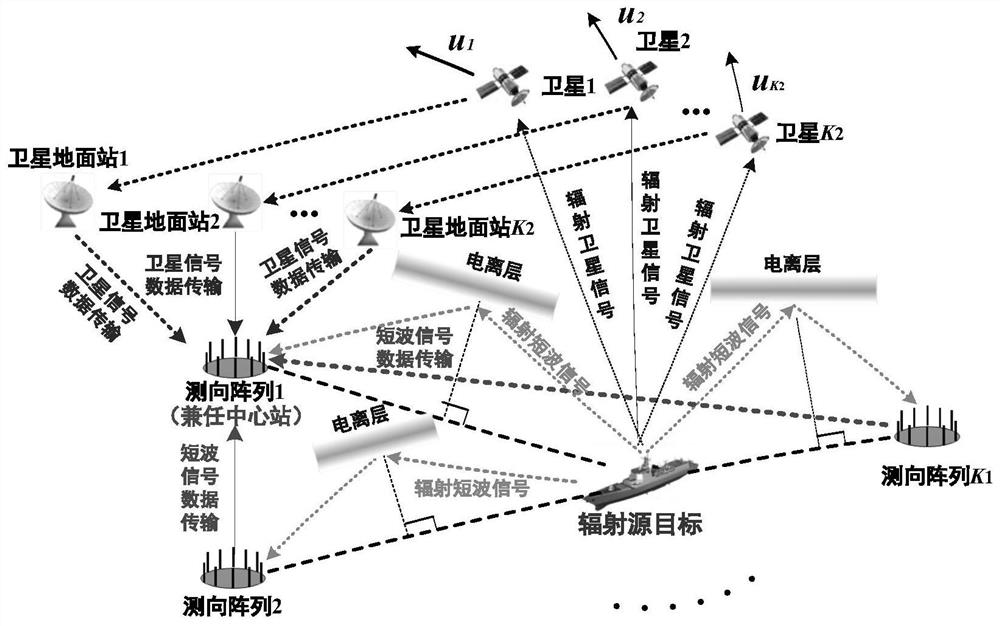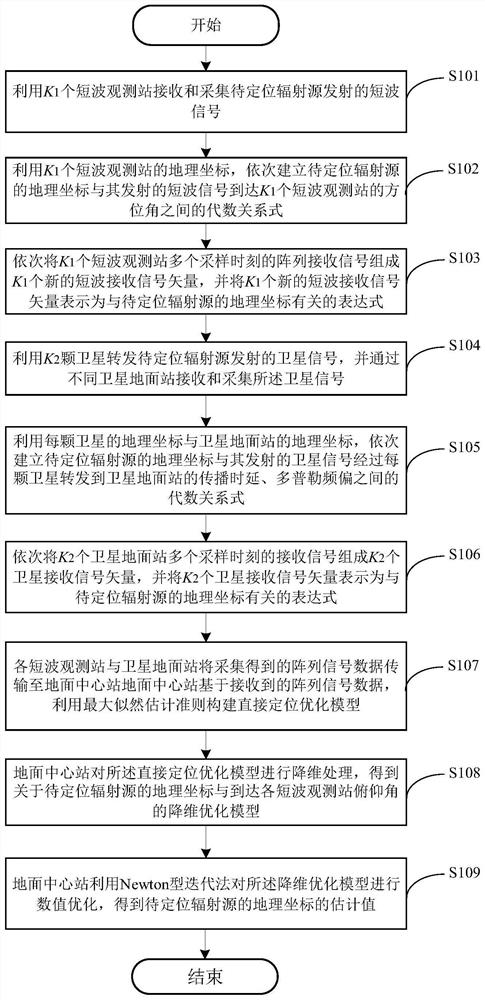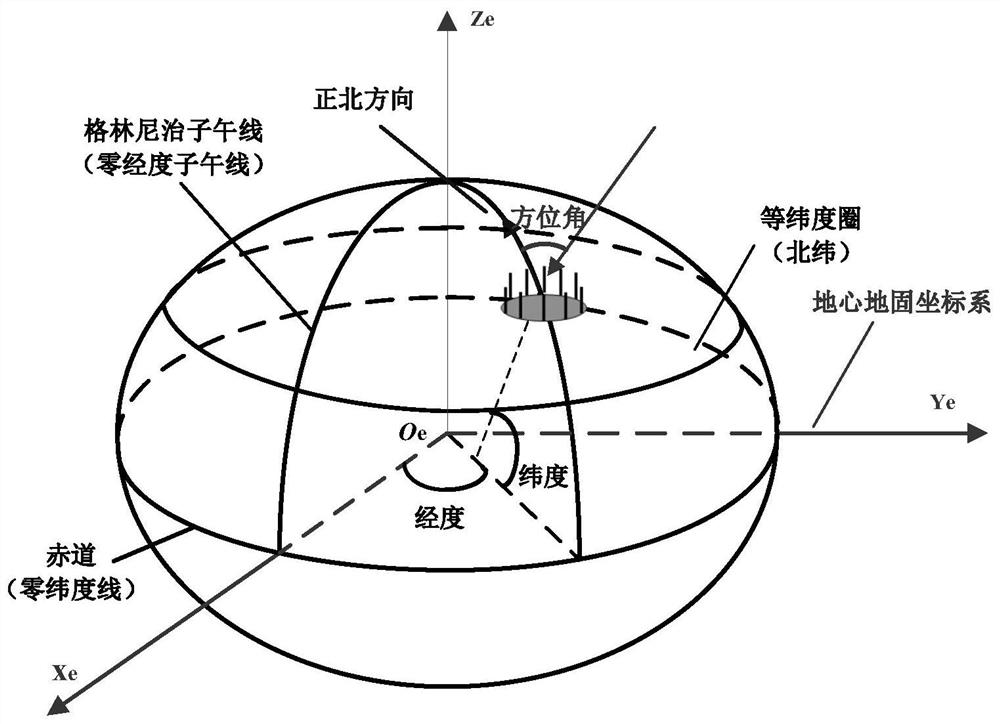Over-the-horizon target direct positioning method based on short-wave multi-station angles and satellite time frequency
An over-the-horizon, short-wave technology, applied in positioning, radio wave measurement systems, measurement devices, etc., can solve the problems of multiple intermediate parameters and limited positioning accuracy, and achieve reliable performance, improved positioning accuracy, and efficient calculations.
- Summary
- Abstract
- Description
- Claims
- Application Information
AI Technical Summary
Problems solved by technology
Method used
Image
Examples
Embodiment Construction
[0075] In order to make the purpose, technical solutions and advantages of the present invention clearer, the technical solutions in the embodiments of the present invention will be clearly described below in conjunction with the accompanying drawings in the embodiments of the present invention. Obviously, the described embodiments are part of the present invention Examples, not all examples. Based on the embodiments of the present invention, all other embodiments obtained by persons of ordinary skill in the art without making creative efforts belong to the protection scope of the present invention.
[0076] combine figure 1 with figure 2 , the embodiment of the present invention provides a method for direct positioning of an over-the-horizon target in coordination with short-wave multi-station angles and satellite time-frequency, comprising the following steps:
[0077] S101: Use K 1 A shortwave observation station (an array installed at the observation station capable of...
PUM
 Login to View More
Login to View More Abstract
Description
Claims
Application Information
 Login to View More
Login to View More - R&D
- Intellectual Property
- Life Sciences
- Materials
- Tech Scout
- Unparalleled Data Quality
- Higher Quality Content
- 60% Fewer Hallucinations
Browse by: Latest US Patents, China's latest patents, Technical Efficacy Thesaurus, Application Domain, Technology Topic, Popular Technical Reports.
© 2025 PatSnap. All rights reserved.Legal|Privacy policy|Modern Slavery Act Transparency Statement|Sitemap|About US| Contact US: help@patsnap.com



